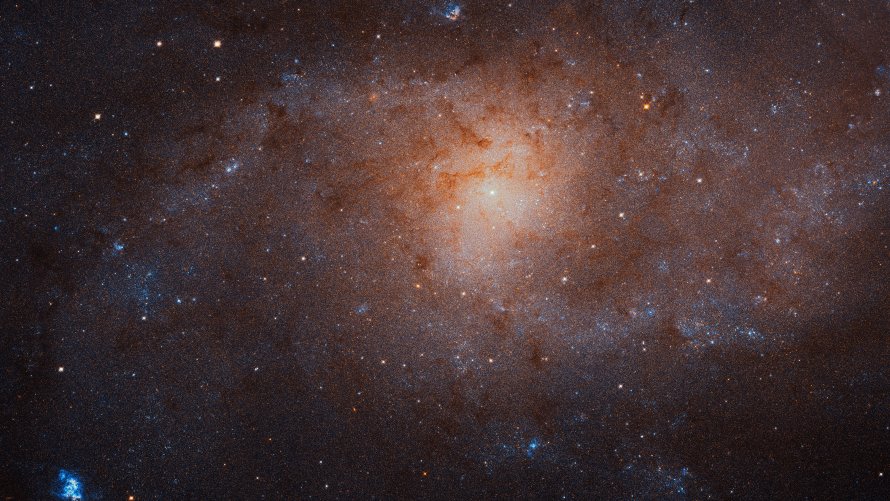M33 (NGC 598) - Triangulum Galaxy
Messier 33 (NGC 598), also known as the Triangulum Galaxy, is a spiral galaxy located in the constellation Triangulum in the Local Group of galaxies. M33 is 3200000 light years away from Earth.
M33 is best viewed during winter, is magnitude 5.7, and can be viewed with naked eye (barely). M33 is 71' x 42' in apparent size. For reference, the full moon is 30'.
Observing difficulty: Hard
- Name:
- Triangulum Galaxy
- Type:
- spiral galaxy
- Constellation:
- Triangulum
- NGC or IC:
- NGC 598
- Magnitude:
- 5.7
- Viewing:
- naked eye (barely)
- Size:
- 71' x 42'
- Distance (light years):
- 3200000 LY
- RA:
- 1h 33.9m
- Dec:
- 30 40'
- Season:
- winter
- Galaxy group:
- Local Group
- Messier Marathon #:
- 3
* The naked eye can see up to magnitude ~7-8 objects under ideal dark sky conditions.
The Triangulum Galaxy
Messier 33, also known as the Triangulum Galaxy, is the third-largest member of our Local Group of galaxies, which also includes the Milky Way, the Andromeda Galaxy, and about 54 other smaller galaxies. Situated within the constellation of Triangulum, hence its common name, M33 presents a fascinating exploration for astronomers, both amateur and professional. This article delves into the discovery, characteristics, and observation details of the captivating M33.
Discovery and Historical Significance
First documented by Giovanni Battista Hodierna, an Italian astronomer, in the mid-17th century, M33 wasn't officially recorded until 1764 by Charles Messier. It was later independently discovered by William Herschel in the 18th century, who was the first to resolve its spiral structure. Edwin Hubble, in the early 20th century, definitively established M33 as an external galaxy to the Milky Way, contributing to our understanding of the scale of the Universe.
Physical Characteristics and Magnitude
M33 is approximately 3 million light-years away from the Earth, making it one of the most distant permanent objects that can be viewed with the naked eye. Classified as an intermediate spiral galaxy, it is smaller than the Milky Way and Andromeda but is notable for its sizeable population of bright, massive stars and gigantic H II regions, which are areas of ionized atomic hydrogen gas. Its apparent magnitude is about 5.7, although its large size and low surface brightness can make it a challenging object to spot under light-polluted skies.
Astronomical Significance
The Triangulum Galaxy is a valuable target for studying the formation and evolution of galaxies, given its relative proximity and the fact that its full spiral structure can be viewed face-on. It also hosts numerous star-forming regions, the most famous of which is NGC 604, one of the largest H II regions known. M33 is also believed to interact gravitationally with the Andromeda Galaxy, which may have influenced its rate of star formation and overall evolution.
Finding and Viewing M33
Located in the constellation Triangulum, M33 can be found by first identifying the Great Square of Pegasus and the constellation of Andromeda. Triangulum is just to the south of Andromeda, and M33 is midway between the stars Mothallah and Beta Andromedae. Given its magnitude of 5.7, it can be seen with the naked eye under excellent dark-sky conditions. However, due to its low surface brightness, binoculars or a small telescope would significantly enhance the viewing experience. Larger telescopes under dark skies can begin to reveal its spiral structure and the bright NGC 604 region.



